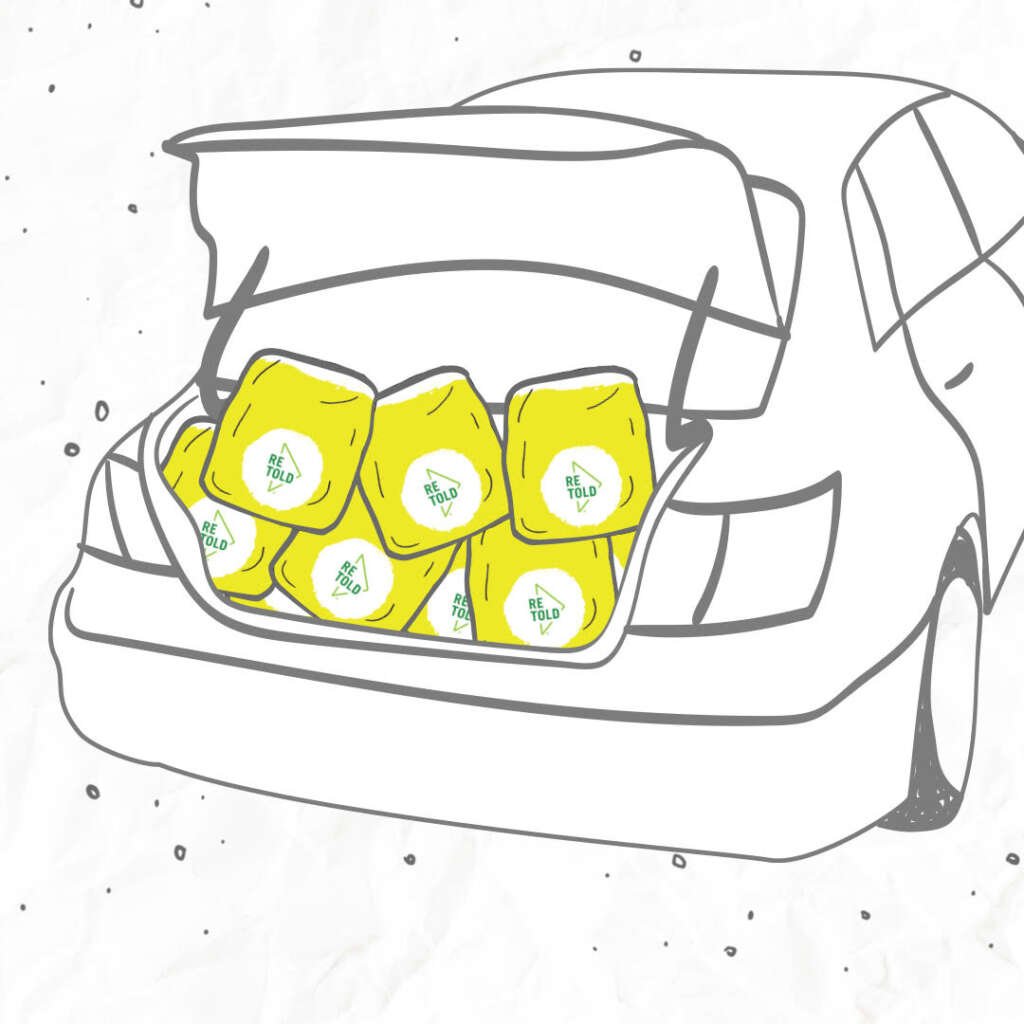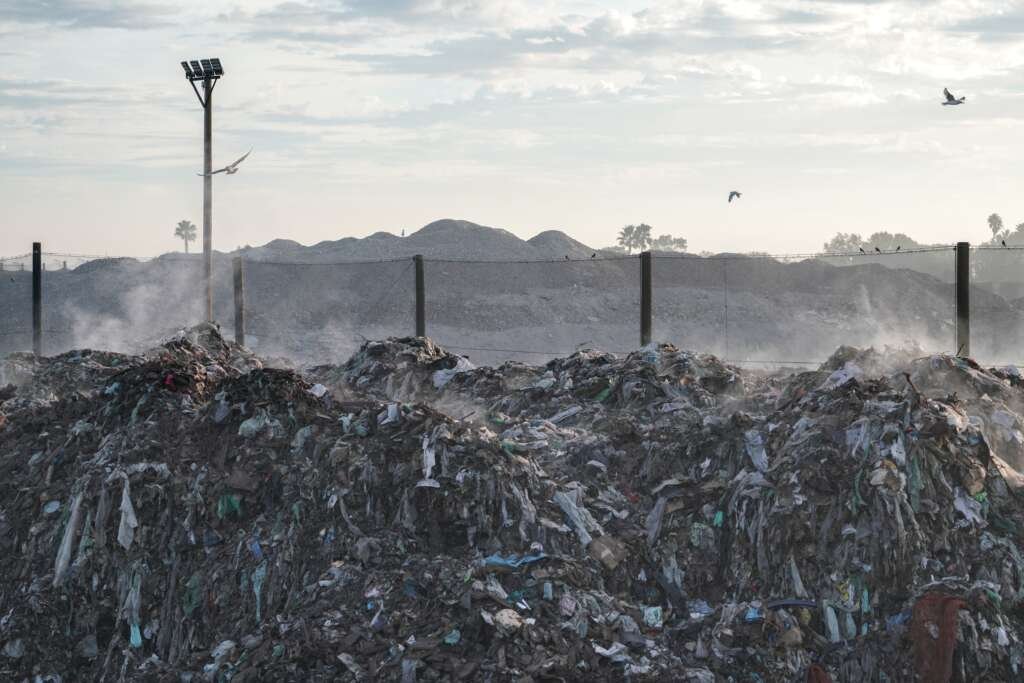Declutter Your Closet With Retold Recycling

Share This Article
If you’ve ever wondered, Where can I recycle clothes near me, one company makes it easy to dispose of clothes without sending them to the landfill.
| Items in this article are hand-selected and vetted for their commitment to minimizing their impact on the environment. If you purchase one of these items we may or may not earn a commission. |
Recycling can feel useless when you realize that items like clothes, towels, napkins, and sheets- can’t be put into recycling or compost bins. Considering that in the U.S. alone, we throw away around 11 million tons of textile waste into landfills yearly, having easy sustainable solutions for recycling items like sheets is a small but necessary step to increase the current 14.7% recycling rate for textiles. But when your jeans or sheets rip beyond repair or are beyond use, what is the most sustainable solution to dispose of them?
Realizing that textiles often involve a tricky disposal solution to avoid sending them to the landfill, Amelia Trumble and Alan Yeoh launched Retold in 2020 to offer customers better solutions to dispose of old textiles that divert them away from landfills. The company offers conscious customers ready-to-ship RetoldBags that they can fill with old clothing and textiles. Through partnerships with charities, thrift stores, up-cyclers, and next-generation fabric houses, textiles are diverted away from landfills.
We Wanted To Learn About Recycled Cotton, So We Asked An Expert
Click to read more…
Despite trying to recycle single-use packaging or compost food scraps, I’ve often struggled to avoid landfills when disposing of household textiles. Where do I recycle clothes near me? When the answer didn’t present itself easily, I stored old napkins, sheets, and clothing in bags in closets. But, when I heard about Retold, I realized just how important the solution the company was offering is for those of us looking for ways to recycle that can easily fit into our busy lives. So, I had two of their plastic-free bags made from biodegradable and compostable cornstarch delivered to me. Within 20 minutes, I filled their bags, slapped on the pre-paid label, and dropped them off at my local USPS. Recycling tricky textiles felt easy.
To learn more about the brand story and to gain a deeper understanding of why textiles are so hard to recycle, I asked Amelia to share her insight about recycling textiles.

What inspired you to start Retold?
I co-founded Retold Recycling when I worked in Marketing at MAC Cosmetics in New York and frequently talked about a long-term pivot to invest our efforts into a business that was doing good for the earth. Years later, I was renovating my closets in a small NYC apartment and was frustrated to find no solution to easily declutter unwanted clothes, particularly without adding to landfill. My business partner Noelle and I crystallized the idea over dinner one evening and then Alan invited himself to join us in the business! (Lucky for us, because he is the math guy/a customer data guru).
What challenges have you faced recycling items?
The biggest challenge we faced was finding the right recycling partner – one that was as focused on and believed in our mission #nolandfill, where the economics made sense, and where they had the ability to receive and sort out bags. It was an almost 2-year hunt, where we lost hope many times!
Why did you choose to focus on a product’s end of life?
That wasn’t intentional – we were focused on finding a solution for our collective need for a textile recycling solution. Honestly, once you realize that you have been contributing to the landfill, you will likely feel guilty and want to make a better choice in the future!
Click to read more…
Why did you choose to focus on textiles in particular?
From what we have learned about the industry, textile recycling has been a very business or B2B based practice. There have been limited solutions for post-consumer waste and certainly none that focus on a simple and convenient solution like Retold! Further, from a technical PO, fabric recycling is difficult because most garments may contain multiple materials, with various blends of fibers. Thankfully there are constant development technologies here – including upcycling into new fabrics by amazing companies such as Evrnu!
Why is it so difficult to recycle clothes and textiles?
Textiles that are put in the recycling bin still sit in landfill because regular recycling facilities don’t have the right machinery to recycle clothing and textiles. This means any clothing you put in the recycling bin can take years to biodegrade and of course, contribute to toxic air pollution.

What should the average consumer know about the impact of textile waste?
When clothing and textiles get thrown away, it can take over 200 years for the materials to decompose in a landfill. During this time, textiles generate greenhouse methane gas and leak toxic chemicals and dyes into the groundwater and the earth.
Plastics: More Problems: 10 Tips On How To Recycle Better
Click to read more…
Outside of reducing landfill waste, what are some of the other benefits of recycling textiles?
Obviously, recycling clothing helps eliminate greenhouse gasses that contribute to climate change. But in the future there will be more opportunities to be fully cyclical with our fashions, thus informing the production of items to be more sustainable from the get-go! Stella McCartney is one brand that is deeply innovating in this space which is very exciting!
How do you minimize your environmental impact in your personal life?
Well, the big thing I have done recently is switching to a fully electric vehicle and I am loving it! It’s convenient for me because I have a charging station close by, but I encourage everyone to make the change if they can. Some other smaller changes I have made in the last year include – switching to Dropps for a more sustainable laundry day each week, utilizing my SodaStream more instead of buying cans of bubble water, and I order from Imperfect Foods weekly which perfectly ok food items from waste!
What are your next eco-living goals for this year and beyond?
This year I am committed to buying less and buying well! Some of our brand partners are coming out with more cool sustainable ranges so I will spend my fashion dollars with them. Also, I am going to finally make the switch to being 100% clean with the makeup and skincare I use each day – most of my makeup is Merit now! And finally, now my daughter is almost 4 I think she is ready to help participate in a beach clean up or a similar eco-activity so she can understand her environmental footprint better!
